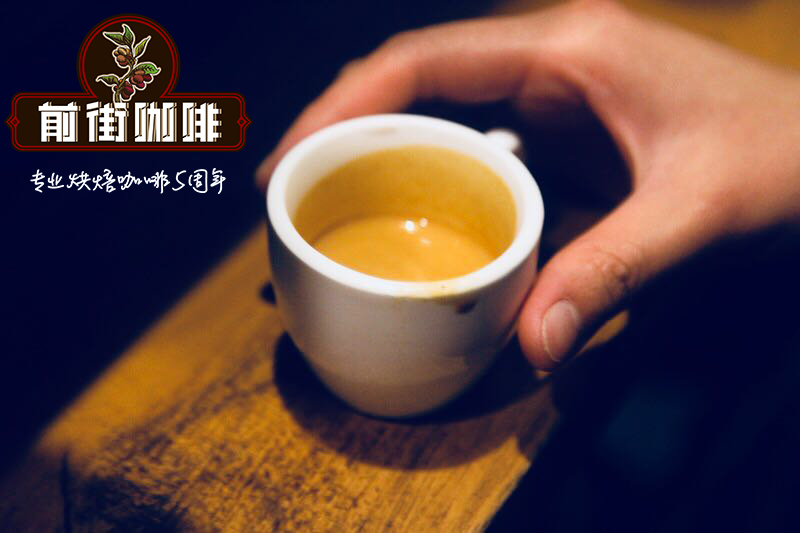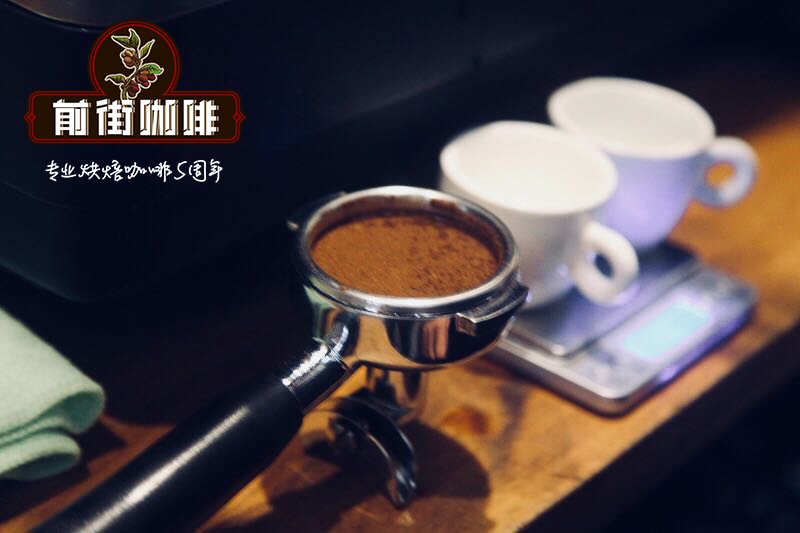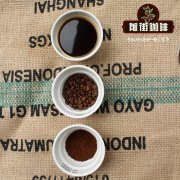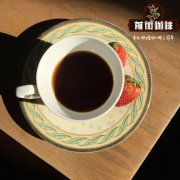Espresso | when espresso encounters Philharmonic filter paper | extraction scheme of espresso
Have you ever tried to add Philharmonic filter paper to both the top and bottom of the coffee bed when making espresso? This kind of play is very interesting.
A few days ago, Scott Rao used filter paper to make espresso with a concentration of more than 25 per cent on and off the coffee bed. What kind of game is he playing? If you follow a series of daily coffee tips posted by Scott Rao on Instagram, you'll see a recent article describing how to use cut filter paper to hold coffee on top and under a powder bowl. By doing so, he can reduce the channel and push the extraction by more than 25%, and get delicious espresso, even at these high extraction rates.
"not only does each filter paper seem to increase extraction, but the filter paper at the top seems to reduce a lot of channel effects," Scott wrote. " It's a big deal.
Although people have been experimenting with Philharmonic filter paper in espresso baskets for many years, something very interesting seems to happen if such a high extraction rate can be achieved without "over-extraction". So, which part of this method is new, and why does filter paper have such a big impact on espresso? Perhaps most importantly, why don't these concentrates taste overextracted?

How do you do that?
First of all, let's look at what we already know. If you have ever tried to put an Philharmonic filter paper in your coffee brewing handle, you may be surprised to find that even if you put an extra layer on the flowing road, the coffee will be much faster. In the process of making espresso, coffee particles, especially fine powder, "move" to the bottom of the powder bowl as the liquid flows. In a traditional coffee brewing handle, these particles partially clog the holes in the bottom, slowing down the flow of coffee. Because there is filter paper at the bottom, the particles cannot pass through, and the fine particles cannot plug the holes, so the flow rate is faster. A faster flow rate allows coffee beans to be ground finer and give a higher extraction rate. In espresso, any method that allows a higher degree of extraction will effectively allow you to extract more uniform coffee, resulting in a better taste and more sweetness, allowing you to use less coffee to reach the same concentration.
When combined with other methods to increase the amount of extraction, Scott is making espresso with a higher extraction rate (more than 27%) and approaching the solubility limit of the coffee. However, he claims that today's espresso is tastier than ever before, without the bitterness and dryness of overextraction as we are familiar with. How was this possible?
The answer is the function of the channel. These dry and bitter tastes are due to tannins and other macromolecules, which can only dissolve in highly locally extracted areas-in other words, water along the path of the coffee powder layer. Let's ask Professor Stephen Abbott to explain why:
There is a law of physics called the no-slip boundary condition, which means that the velocity at which the liquid flows through the surface is zero on the surface itself. This means that the only way for molecules to escape from the surface is through diffusion, and for macromolecules like bitter tannins, the process is very slow-which is a good thing because we don't want them. The only way for these molecules to escape is to keep the turbulence as close to the slip-free boundary as possible. The channel function is a Matthew effect-the more water flows from one road, the more chaotic it becomes, the more turbulence it produces and the more tannins it pulls out. So any substance such as reducing tannins will help to reduce the extraction of bitterness. "
In other words, it's not just over-extraction: tannins and other macromolecules need channel-generated turbulence to extract into coffee. Because our tongues are sensitive to bitterness and dryness, the presence of a little of these molecules can destroy a cup of espresso. However, if we can reduce the passing rate of macromolecules such as tannins, then we can increase the amount of extraction before these flavors begin to appear.

Important Notice :
前街咖啡 FrontStreet Coffee has moved to new addredd:
FrontStreet Coffee Address: 315,Donghua East Road,GuangZhou
Tel:020 38364473
- Prev

The Origin and Legend of Coffee | how was coffee discovered?
There are many legends about the origin of coffee, and the most widely spread and well-known is the story of the shepherd. Because of the age, there are many versions of the story of the shepherd: around the sixth century AD, when a shepherd was grazing on the steppe of Ethiopia in Africa, he happened to find that his goat became very excited after eating some kind of red fruit, so the shepherd himself tasted it.
- Next

Coffee brewing | Chemex brewing method | how to use a Chemex pot to make coffee
Chemex has long been one of the most popular manual coffee utensils. This is a hand brewing coffee utensil with the integration of bottom pot and filter cup. Its simple elegance and complex brewing parameters attract beginners and experts from coffee lovers. Here is how to make coffee in Chemex. Prepare the brewing tool: to use Chemex to make coffee, of course you need a Chemex. There are several kinds of no.
Related
- Beginners will see the "Coffee pull flower" guide!
- What is the difference between ice blog purified milk and ordinary milk coffee?
- Why is the Philippines the largest producer of crops in Liberia?
- For coffee extraction, should the fine powder be retained?
- How does extracted espresso fill pressed powder? How much strength does it take to press the powder?
- How to make jasmine cold extract coffee? Is the jasmine + latte good?
- Will this little toy really make the coffee taste better? How does Lily Drip affect coffee extraction?
- Will the action of slapping the filter cup also affect coffee extraction?
- What's the difference between powder-to-water ratio and powder-to-liquid ratio?
- What is the Ethiopian local species? What does it have to do with Heirloom native species?

